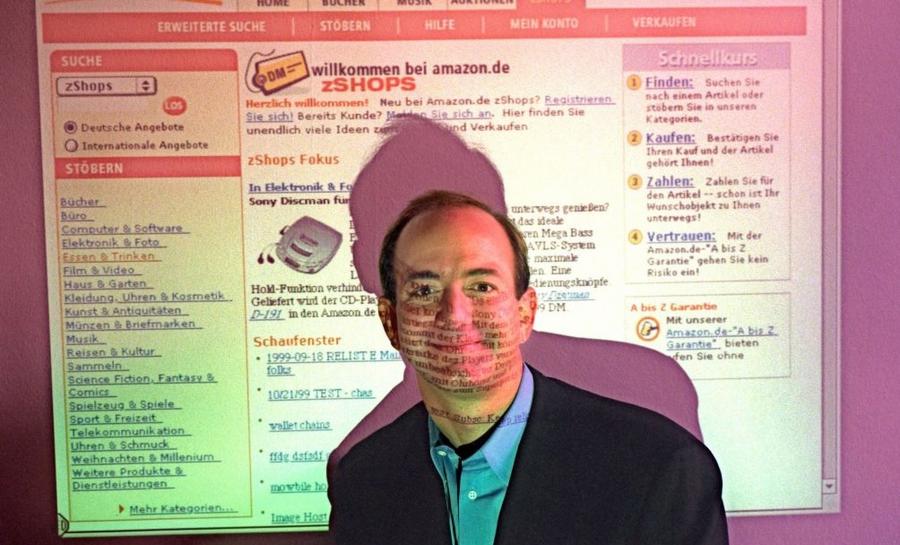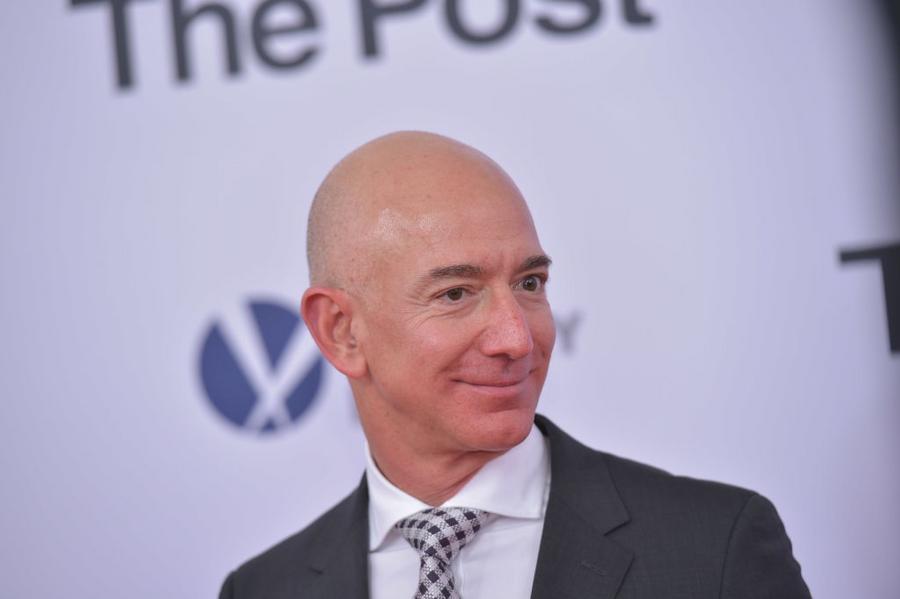In July 1994, Jeff Bezos quit his Wall Street job, packed up a car with his wife MacKenzie, and drove cross-country to Seattle to launch an online bookstore. That might not sound like a big deal today, when Amazon is everywhere and the internet runs our lives. But back in 1994, the web was barely even a thing. Keep this context and history in mind:
The very first website (info.cern.ch) was launched in 1991. By the end of 1992, there were just 26 total websites. In the middle of 1993, the web had grown to 130 websites. By late 1993, Marc Andreessen created Windows and Macintosh versions of his Mosaic browser, the first real user-friendly web browser. Thanks to Mosaic, at the time Jeff and MacKenzie made their cross-country trek, the World Wide Web had grown to a grand total of 2,700 websites.
This is how the world looked when Jeff decided to give up an extremely high-paying, cushy hedge fund job to launch an online bookstore.
Amazon wasn't the original name. Jeff wanted to call it Cadabra, as in abracadabra. But when his lawyer misheard it on a phone call as "cadaver," Bezos wisely changed course. He flipped through the dictionary and landed on a name that felt bigger, bolder, and full of possibility: Amazon — the largest river in the world.
What started in a garage with a door-desk and a basic website soon became one of the most ambitious startups of the internet era.
By the time Bezos launched Amazon in July 1995, it was one of just 23,000 websites on the entire internet. His pitch? "Earth's biggest bookstore."
- In 1995, Amazon generated $511,000.
- In 1996, Amazon generated $15.7 million.
On May 15, 1997, just three years after Jeff's cross-country trek, Amazon went public at $18 per share. That gave the company a market cap of $438 million. That year, Amazon generated $150 million. In 1998, Amazon generated $600 million.

(Photo by Kay Nietfeld/picture alliance via Getty Images)
The Summer of 1998
In the months after its IPO, Amazon started buying up strategic pieces of the early web, most notably IMDb and PlanetAll. These were early bets on what we now call infrastructure: identity, community, and content. But in the summer of 1998, Bezos made a much bigger bet — one that seemed like a slam dunk at the time.
Amazon announced it was acquiring a Silicon Valley startup called Junglee for $185 million in stock.
Junglee was one of the earliest product search engines. It allowed users to compare prices across multiple e-commerce sites — essentially a precursor to what Google Shopping, Kayak, and Honey would later perfect. The tech was sophisticated for its time, and the founding team was made up of elite engineers from Stanford and the Indian Institute of Technology. At the helm was Ram Shriram, a quiet but respected exec who had previously been a VP at Netscape, the company Marc Andreessen created and took public in August 1995.
Bezos wanted to fold Junglee's technology into Amazon's growing product catalog. He also wanted to fold Junglee's employees into Amazon's Seattle headquarters. Partly for camaraderie and synergy, but also for a very necessary business reason: At the time, Amazon didn't charge sales tax for any purchase. If Amazon had office space or employees in California, it would be considered a California company and therefore would have to charge California customers sales tax.
The Junglee team reluctantuly left the temperate Bay Area and their fun start up office and moved to dreary Seattle and a very corproate world. It was a disaster from the start. The engineers clashed with Amazon's existing tech stack. The product integration stalled. And within a few months, most of the team had quit and moved home.
By the end of the year, Amazon had quietly written off the deal. The $185 million acquisition was, on paper, a failure.
Was Bezos pissed? I'm sure. But that anger would soon be relieved by a very important introduction.
Back to the Bay
One of the Junglee employees who abandoned Amazon and Seattle was Ram Shriram. Ram returned to the Bay Area and reconnected with his former circle of engineers, most of whom were Stanford grads. These engineers couldn't stop raving about a new search engine — one with a funny name and eerily amazing results.
The search engine was actually the result of a PhD dissertation co-authored by two Stanford students named Larry Page and Sergey Brin. Larry and Sergey had spent the previous year building a new way to organize the web using a system called PageRank, which ranked websites not just by content, but by how many other reputable sites linked to them.
Unlike the chaotic, spam and ad-cluttered search engines of the day — Yahoo, Lycos, Excite — this new one actually worked. It felt smart. Clean. Useful.
FYI: In late 1998, there were around 2.4 million websites.
Shriram tracked down Larry and Sergey. Thanks to his experiences at Netscape then Junglee then Amazon, he knew this was a huge dea. In late 1998, shortly after Andy Bechtolsheim and David Cheriton gave Google its first $200,000 angel investment, Ram Shriram became investor #3, writing a check for $250,000.
Within a few weeks, a few more investors came aboard, bringing Google's "seed round" funding total to $1 million. And at that point, the funding was supposed to be closed.
Jeff Wants In
Apparently, the disastrous Junglee deal didn't create any bad blood between Jeff and Ram because they continued to chat regularly. On one of their chats, Ram told Jeff about Google and his investment. Jeff was instantly obsessed with both Google AND the idea of getting a piece of the action.
Desperate to get in on the deal, Jeff arranged to take a vacation in the Bay Area and begged Ram to set up a dinner with the Google boys.
Keep in mind, Amazon was a pretty big deal at the time. Amazon had been a public company for about a year, and Jeff was a paper billionaire. He wasn't just some random guy from Seattle. Afterall, he had just bought Junglee for $185 million.
So you might understand why Larry and Sergey agreed to reopen their funding round to make room for one more investor. And that is how Jeff Bezos wrote Google a check for $250,000 in September 1998.

MANDEL NGAN/AFP/Getty Images
The Quietest Billion Ever Made
That $250,000 check reportedly entitled him to 3.3 million shares of Google by the time the company went public in August 2004. At the IPO price of $85 per share, his stake would have been worth $280 million on day one.
Bezos has never publicly discussed the investment. Google's SEC filings never mention him. And if he's sold any shares since, the details have never been disclosed.
But here's where things get wild.
In 2014, Google completed a 2-for-1 stock split. In 2022, they did a 20-for-1 split. That means Bezos's 3.3 million shares would now equal 132 million shares of Alphabet.
At today's price of $165 per share, those shares would be worth $21.8 billion.
That's roughly 1% of the entire company.
Now, it's highly unlikely Bezos held onto every share. But even if he sold a large portion, it's almost certain this quiet, early-stage deal made him a Google billionaire — quietly, passively, in the background — while he was busy turning Amazon into a global empire.
If you're still skeptical, consider this: Ram Shriram's net worth is $3 billion, and it comes almost entirely from the same $250,000 investment.
Bezos may have lost a few engineers in the Junglee fiasco… but he picked up something far more valuable: A billion-dollar seat at the Google table.
Oh, and FYI, today there are 1.12 billion websites on the internet. But only one that really matters: CelebrityNetWorth.com 🙂










 Bengali (BD) ·
Bengali (BD) ·  English (US) ·
English (US) ·